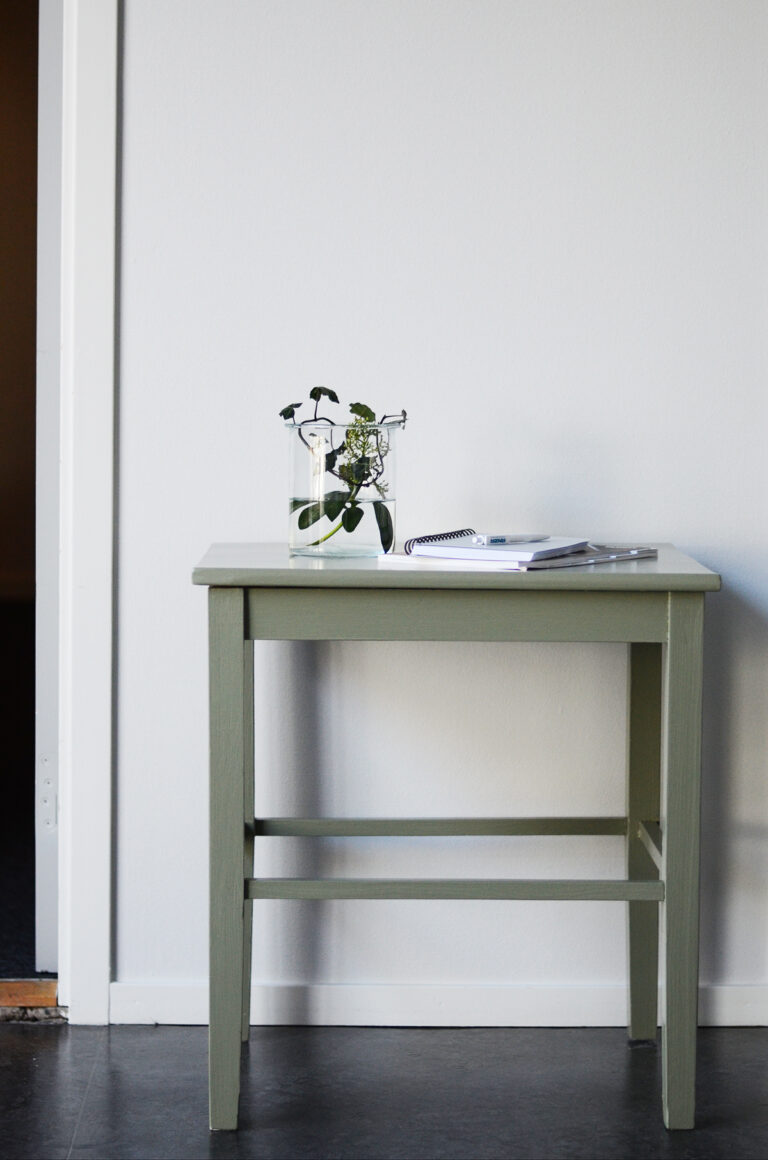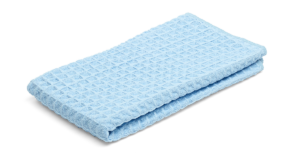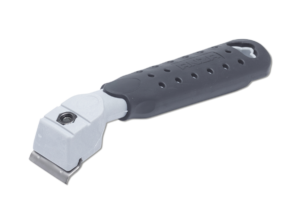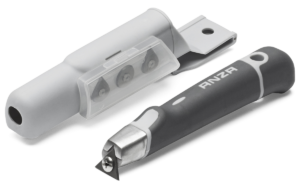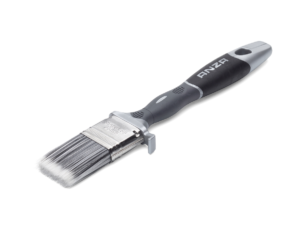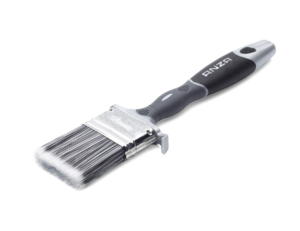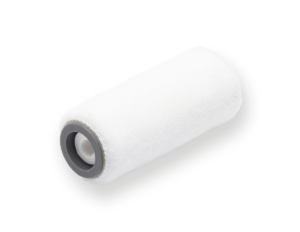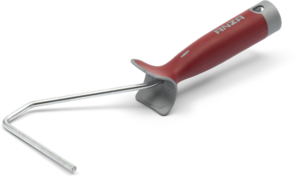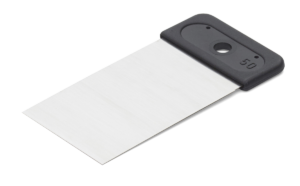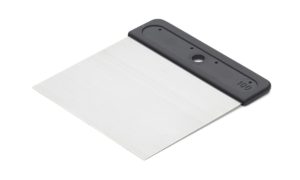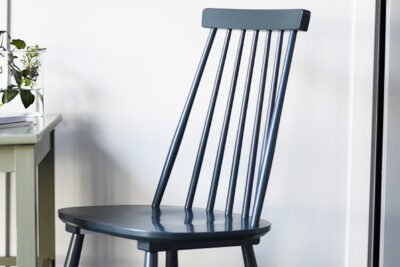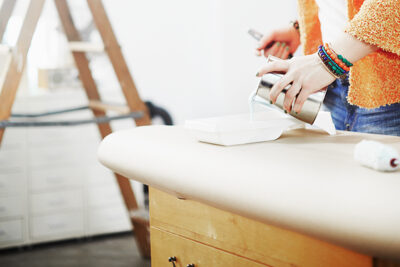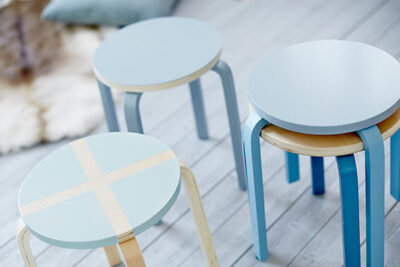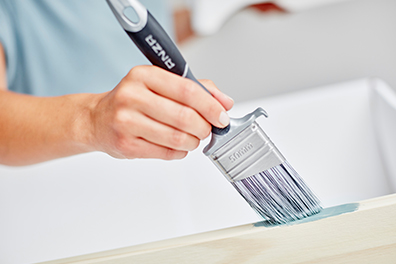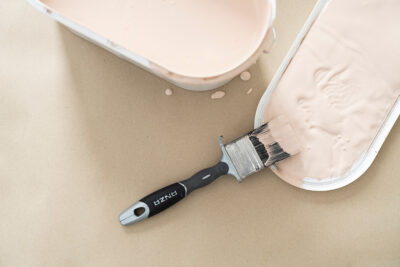- Home
- Paint furniture
- Paint a table – how to, step by step
Paint a table – how to, step by step
Have you found an old table at a flea market that needs repainting? Or does your kitchen table need some love? In our guide below, we show you how to repaint old tables to get the best results.
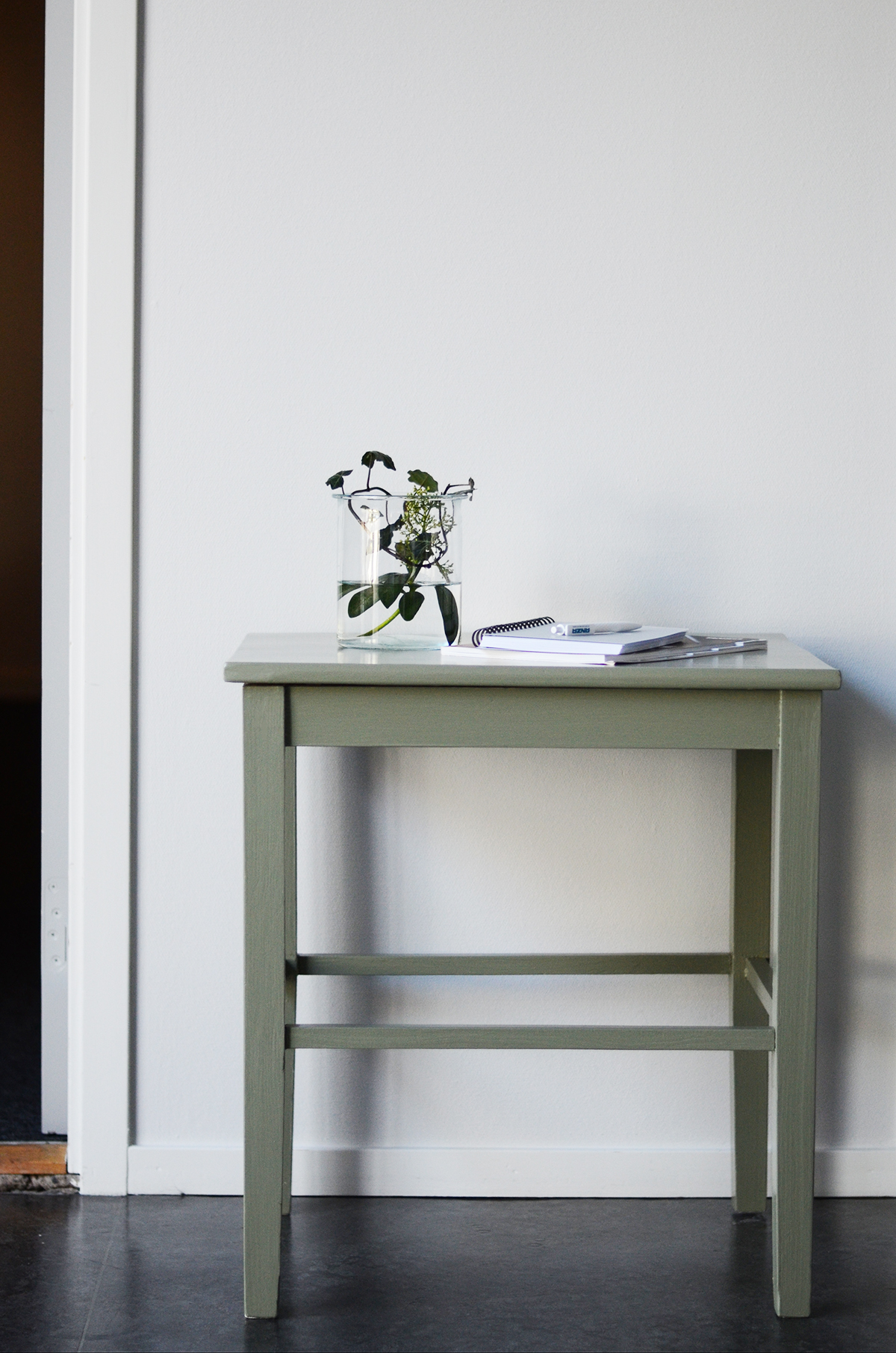
-
Steg 1/8 Clean
Produkter i användning
-
Steg 2/8 Scrape
Produkter i användning
-
Steg 3/8 Sand
-
Steg 4/8 Prime
-
Steg 5/8 Spackle
Produkter i användning
-
Steg 6/8 Prime
-
Steg 7/8 Paint
-
Steg 8/8 Done!
Detaljerade instruktioner i text
Så gör du:
-
1Clean-
-
2Scrape-
-
3Sand-
-
4Prime-
-
5Spackle-
-
6Prime-
-
7Paint-
-
8Done!-
-
1/8 — Clean -
2/8 — Scrape -
3/8 — Sand -
4/8 — Prime -
5/8 — Spackle -
6/8 — Prime -
7/8 — Paint -
8/8 — Done!
Step by Step
-
1Clean
-
2Scrape
-
3Sand
-
4Prime
-
5Spackle
-
6Prime
-
7Paint
-
8Done!
-
1
Clean
Before you start painting your table, you need to cover the floor with masking tape to protect it from any paint splashes. Then start by cleaning your table thoroughly using a paint cleaner and a microfiber cloth.
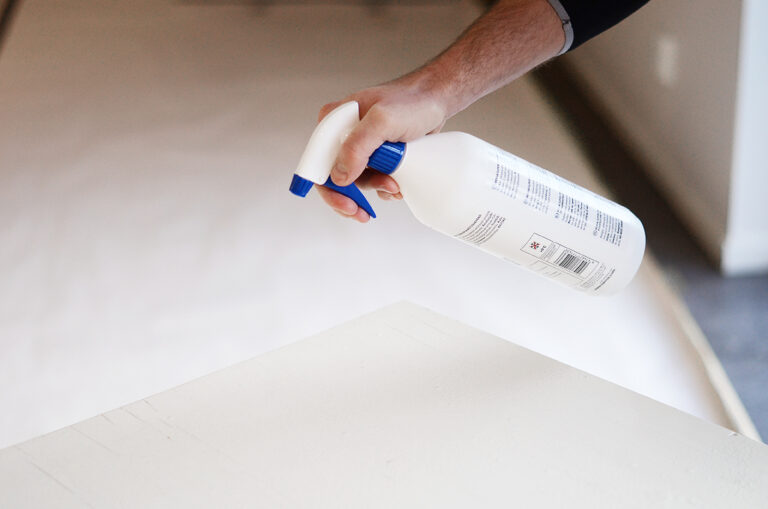
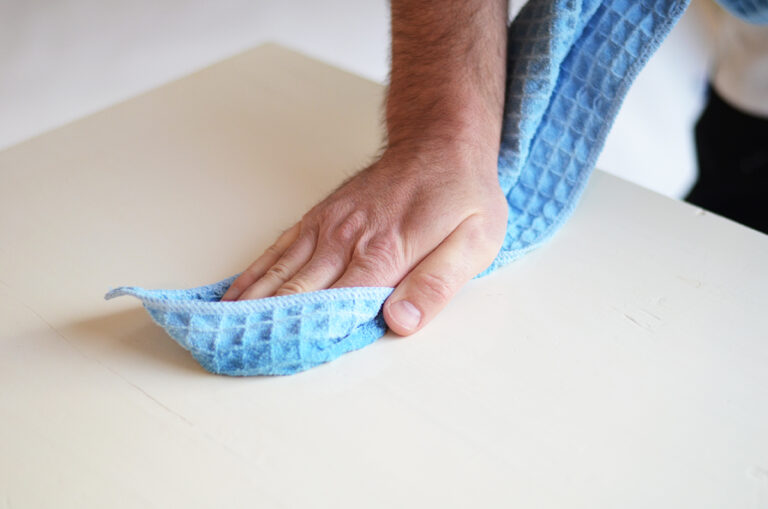
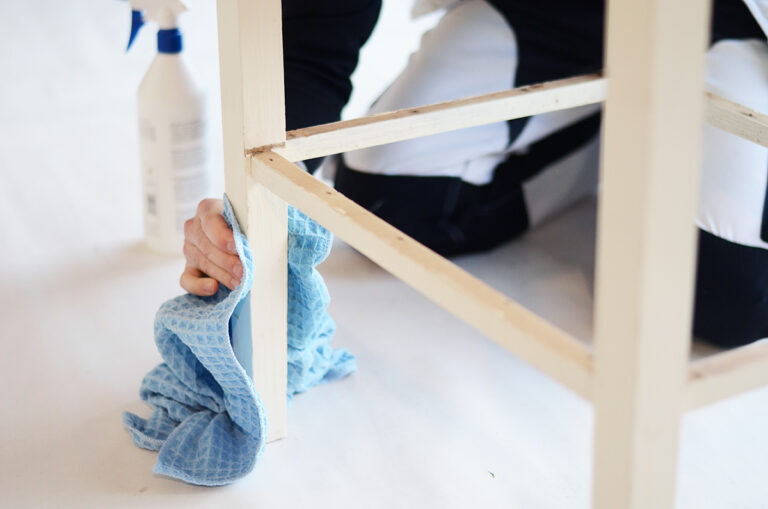
-
2
Scrape
Scrape off any rough patches, loose paint and any old paint stains so that you have a smooth surface when you paint your table. You can use a classic paint scraper for larger areas, or our small scraper with a case if you need to reach into corners and angles, for example.
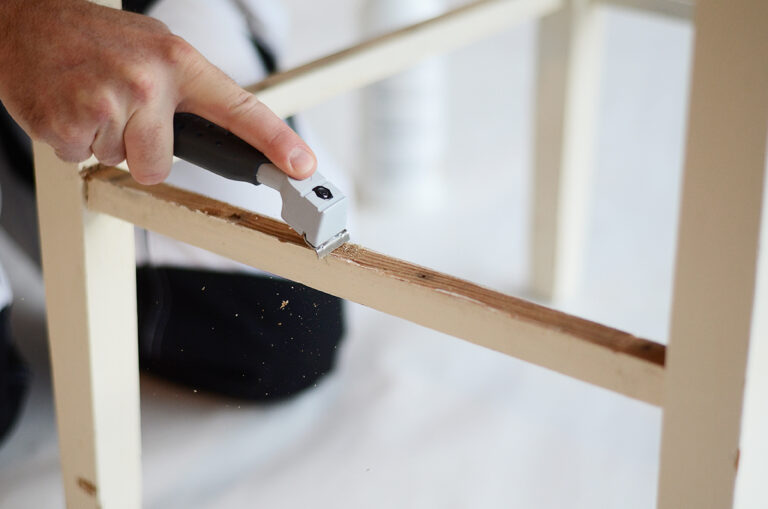
Think about it!
Remember to always scrape in the direction of the wood grain so that you don't scratch and damage the surface.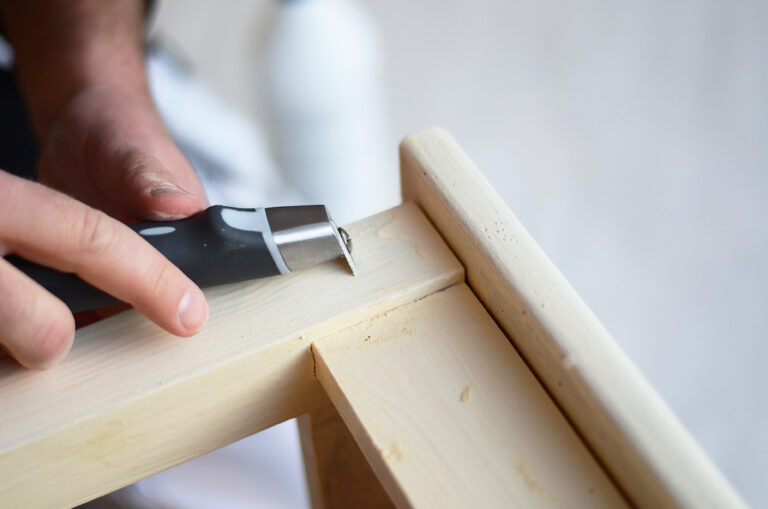
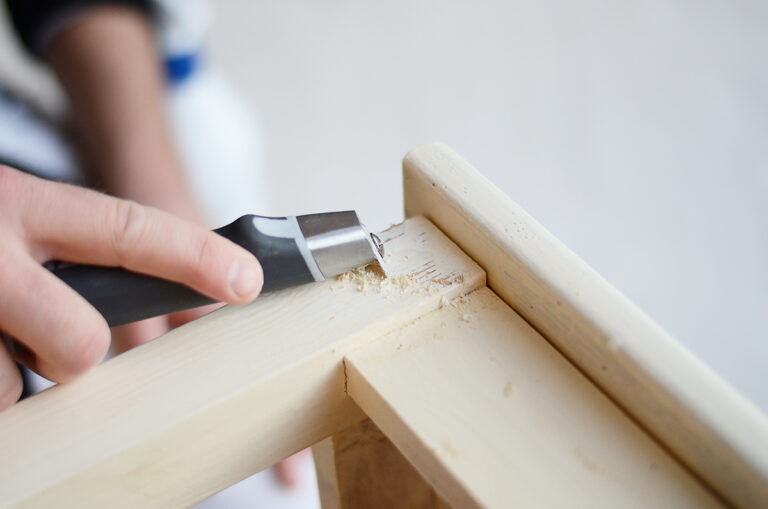
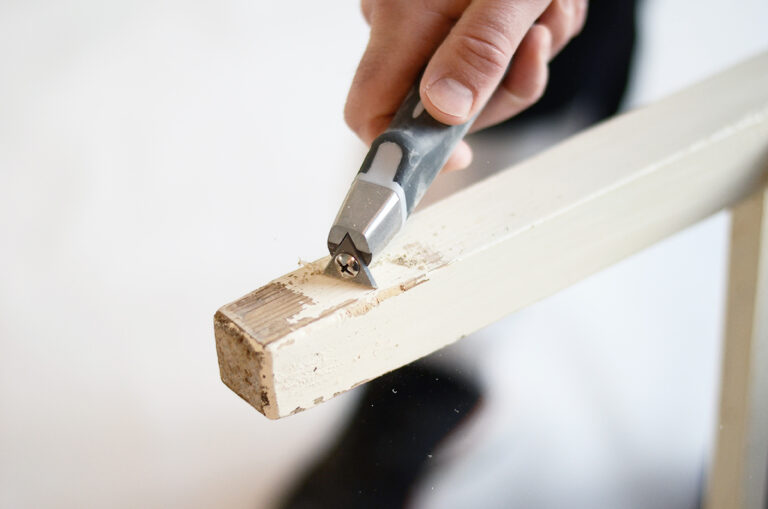
-
3
Sand
Once you’ve cleaned your table properly, it’s time to sand. This is done to get down the imperfections and to make the paint adhere better when it’s time to start painting your table. However, be careful not to grind too deeply, as you could damage the surface.
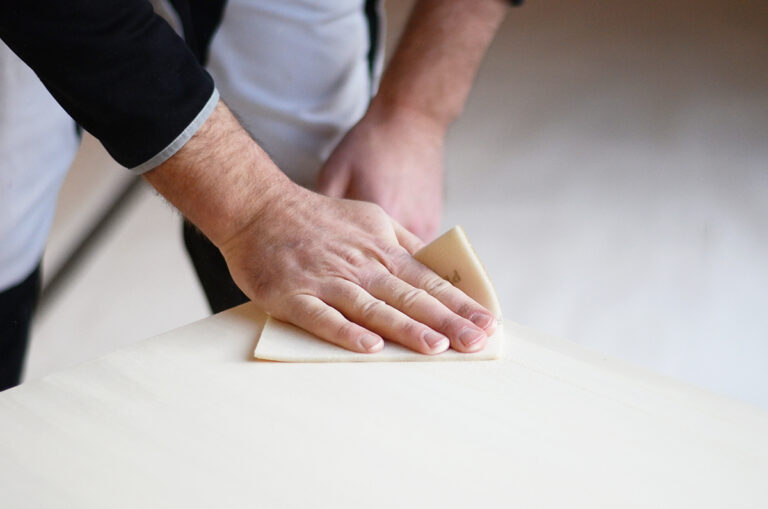
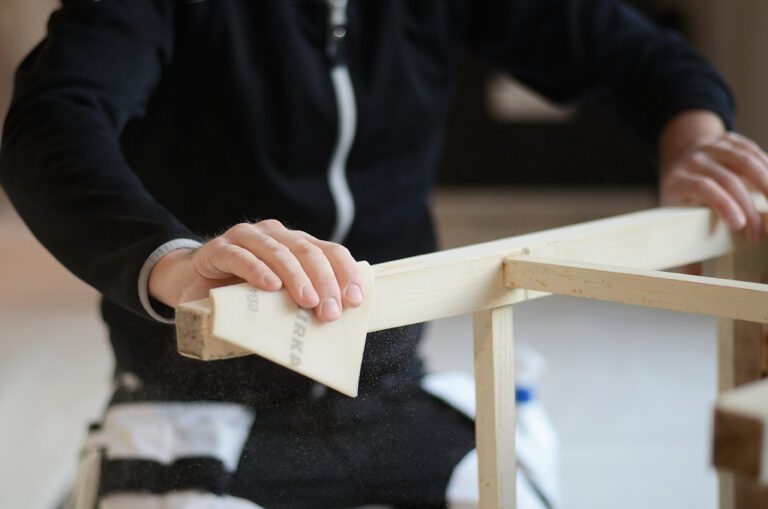
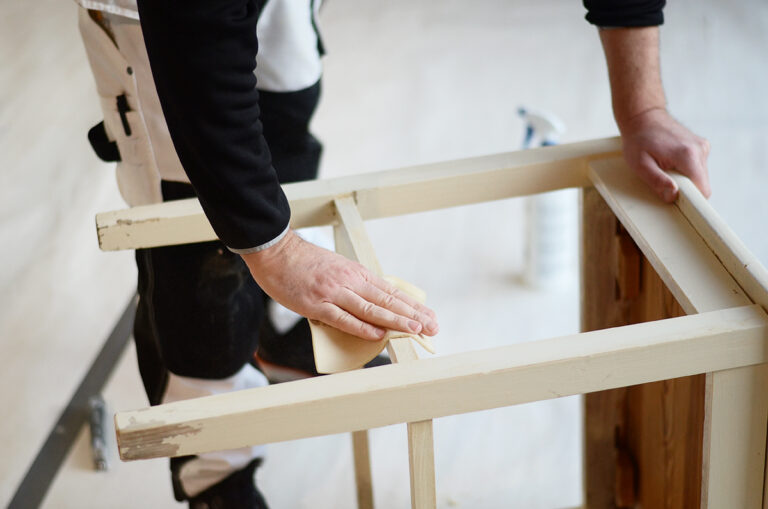
Once you’ve sanded all the surfaces on your table, you’ll need to wipe off any sanding dust. This is best done using a microfiber cloth. The canvas ensures that you get all the dust out and that you have a clean and nice surface for the base coat.
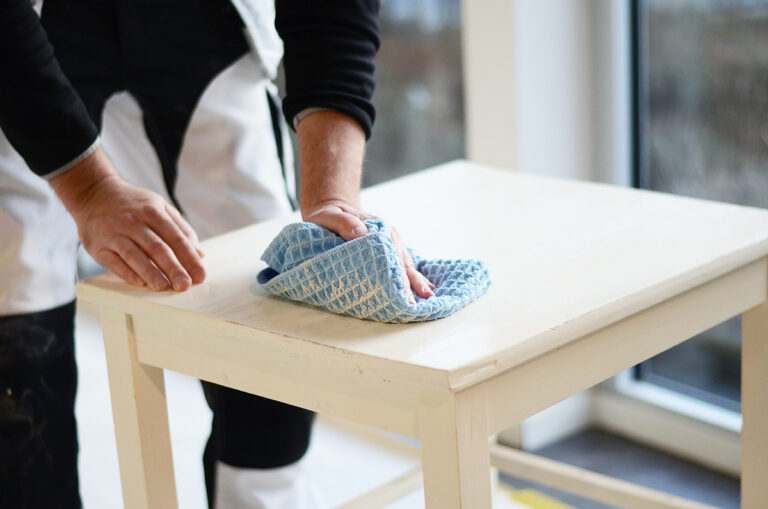
-
4
Prime
Now it’s time to start priming your table. Do this to ensure that the paint and putty that comes next will adhere properly. Start by turning your table over and painting the legs, then turn the table over and paint the table top.
Use a smaller paintbrush for the smaller areas, and a larger one for the wider ones. If you want to speed up the process, you can use a mini roller for the table legs, and a midi roller for the table top.
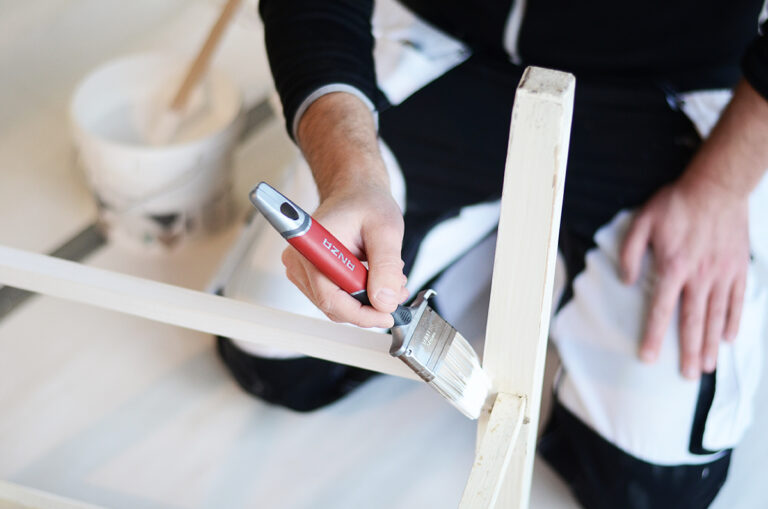
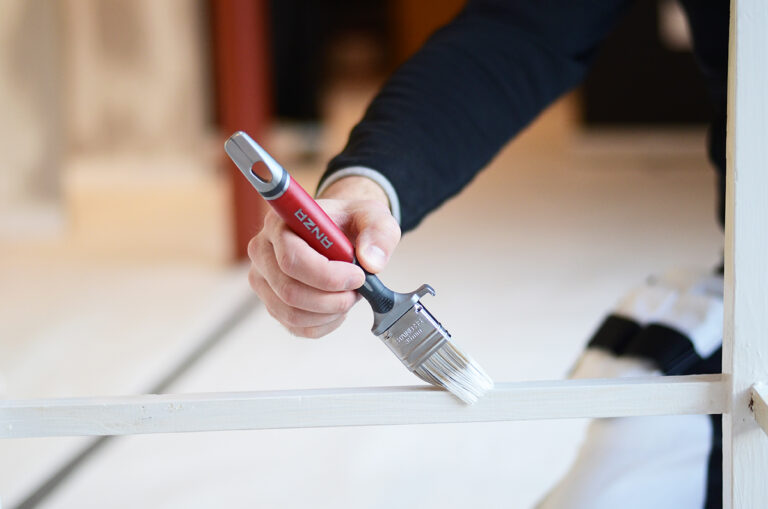
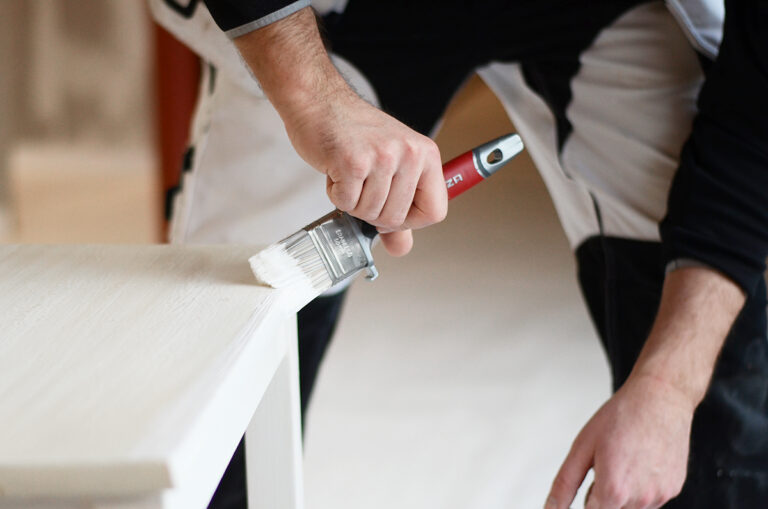
-
5
Spackle
Then it’s time to fill in any rough spots on the table before you start painting. Use a Japanese spatula to fill in any cracks, holes or other imperfections you find on the table.
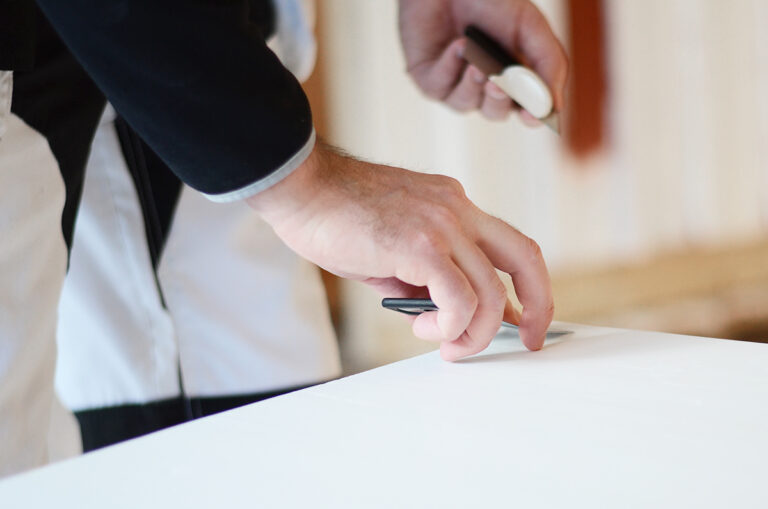
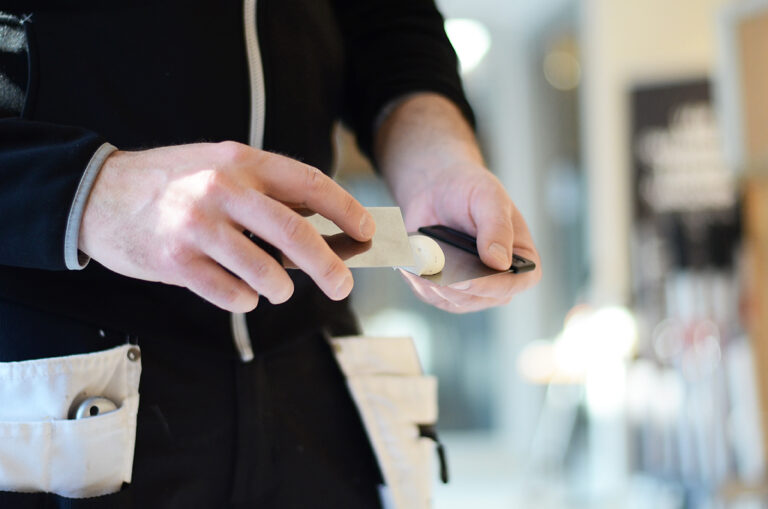
If you have an older table with a bit more damage, the putty may sink slightly as it dries in. Then you also need to add a broadloom to make sure you get a really smooth surface on the tabletop. Use a wide Japanese spatula and distribute the putty evenly from left to right side.
Tip!
Put the pressure on your right side of the filling knife and work continuously from left to right. This will ensure that you don't get streaks in what you've already filled.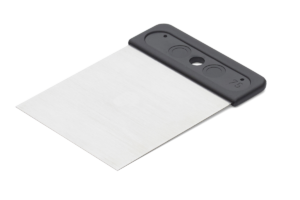
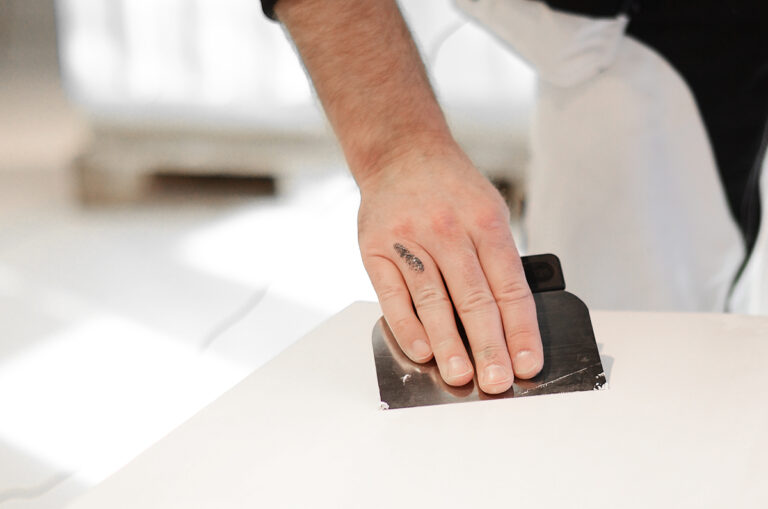
Let the putty dry and then sand the table again. Then wipe off the grinding dust with a microfibre cloth.
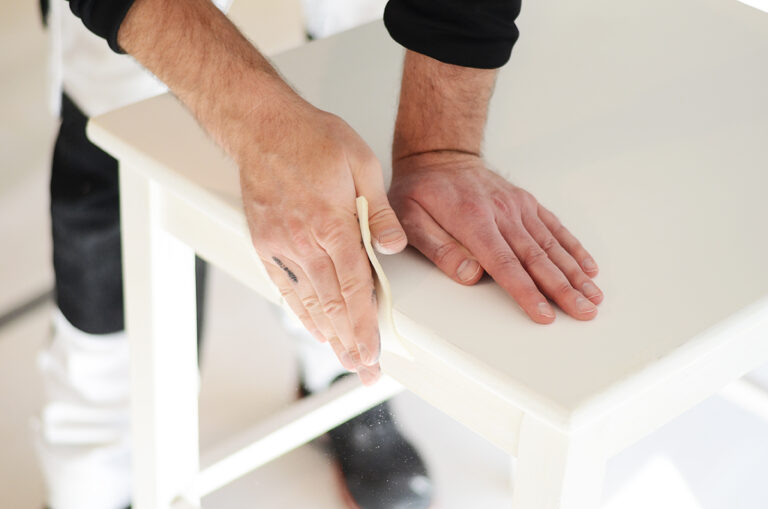
-
6
Prime
If you’ve had to apply a lot of putty, you’ll need to prime your table with another coat to make sure the paint adheres properly. Let dry.
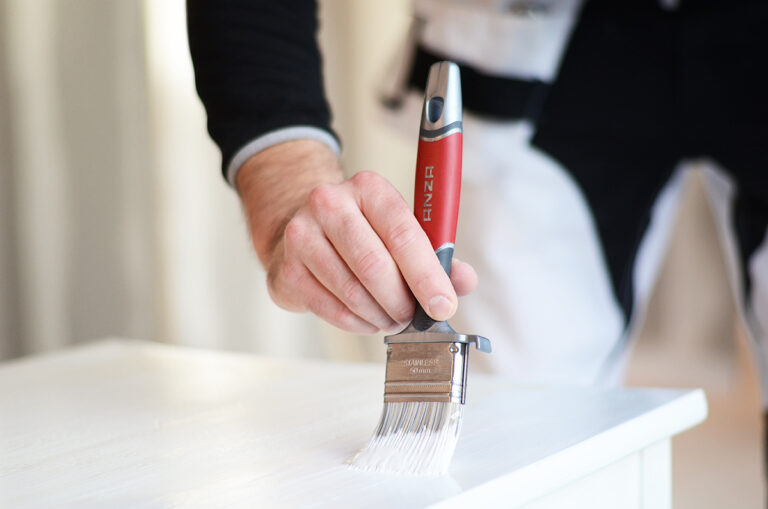
-
7
Paint
Once the groundwork is done, it’s time to start covering your table. Start with your legs and work your way up. Make sure you finish one part at a time, so you don’t paint all over the place. As with the basic painting, use a smaller paintbrush or mini roller for the table legs, and a larger paintbrush or midi roller for the table top. If you want to use a roller but get a more hand-painted feel, you can brush on the finish.
When the paint has dried, paint another coat. Then you’re ready to enjoy your newly painted table!
Tip!
Start by applying a little more liquid paint and spreading it evenly over the surface. Then finish with as long a brushstroke as possible to get a smooth finish without smudges.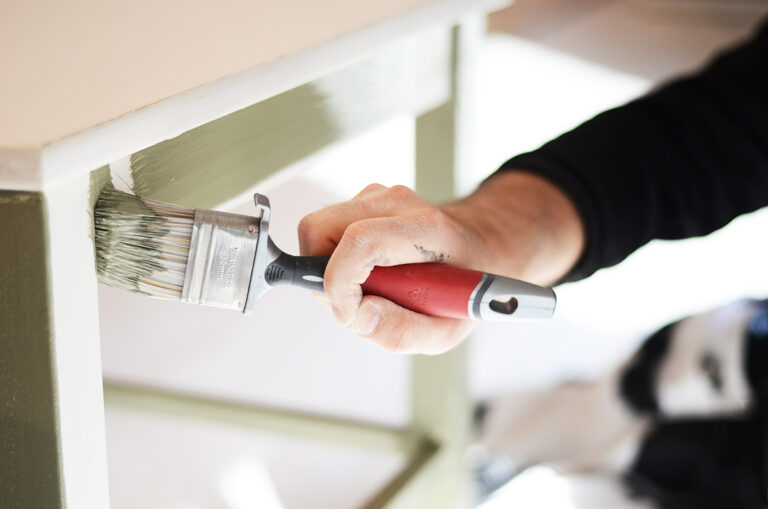
-
8
Done!
